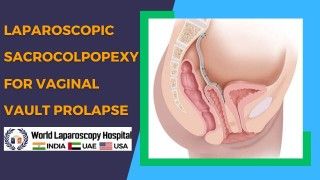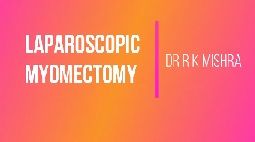Giant Scrotal Inguinal Hernia: Step-by-Step TAPP Laparoscopic Repair
Add to
Share
13 views
Report
14 hours ago
Description
At World Laparoscopy Hospital (WLH), Gurugram, the management of complex hernias such as Giant Scrotal Inguinal Hernia has reached a new standard of excellence through the Totally Extraperitoneal (TAPP) Laparoscopic Repair technique. Under the expert guidance of Dr. R. K. Mishra, a world-renowned laparoscopic surgeon and educator, this minimally invasive approach has revolutionized outcomes for patients suffering from large and challenging hernias. Understanding Giant Scrotal Inguinal Hernia A giant scrotal inguinal hernia is a rare but serious condition in which abdominal contents—often the intestine, omentum, or even bladder—descend deeply into the scrotum. These hernias can cause significant discomfort, impaired mobility, and cosmetic deformity. Traditional open repair techniques often lead to longer recovery times, higher recurrence rates, and increased postoperative pain. The laparoscopic TAPP (Transabdominal Preperitoneal) repair offers a safer and more efficient alternative, even in large or recurrent hernia cases. Step-by-Step Surgical Technique (TAPP Repair) 1. Patient Preparation and Positioning The patient is placed in a supine position with a slight Trendelenburg tilt. After administering general anesthesia, the abdomen is prepared and draped in a sterile manner. 2. Port Placement A 10 mm camera port is introduced at the umbilicus, followed by two 5 mm working ports in the lower abdomen. Pneumoperitoneum is created to visualize the hernia and related anatomy clearly. 3. Peritoneal Incision A careful incision is made on the peritoneum above the hernia defect. This allows access to the preperitoneal space, which is then gently dissected to expose the hernia sac. 4. Hernia Sac Dissection and Reduction In giant scrotal hernias, the sac is often long and adherent. The surgeon meticulously dissects and reduces the hernia sac back into the abdominal cavity, taking special care to avoid injury to the spermatic cord structures and vessels. 5. Identification of Key Landmarks Important anatomical landmarks—such as the inferior epigastric vessels, vas deferens, and testicular vessels—are identified and protected. This step ensures safety and prevents recurrence. 6. Mesh Placement A large, anatomically shaped polypropylene or lightweight composite mesh is placed to reinforce the myopectineal orifice. The mesh is positioned to cover all potential hernia sites: direct, indirect, and femoral. 7. Mesh Fixation and Peritoneal Closure The mesh is fixed using tackers or glue, ensuring smooth placement without folds. The peritoneum is then closed securely over the mesh, preventing contact with intra-abdominal organs. Advantages of Laparoscopic TAPP Repair at WLH Minimally invasive and scar-free approach Reduced postoperative pain and faster recovery Lower recurrence rate compared to open repair Precise anatomical repair under magnified 3D vision Early return to work and normal activities Superior cosmetic outcome At World Laparoscopy Hospital, every surgical procedure is performed in a state-of-the-art 4K-equipped operation theater, combining advanced technology with the expertise of highly trained surgeons. Surgeons from around the world also come here to train and learn the art of laparoscopic hernia repair under direct supervision of Dr. Mishra. Postoperative Care and Recovery Patients undergoing TAPP repair for giant scrotal hernia at WLH typically experience minimal discomfort and are discharged within 24–48 hours. They are advised to resume light activities within a few days and return for a follow-up after one week. Conclusion The TAPP laparoscopic repair of giant scrotal inguinal hernia represents a milestone in modern hernia surgery. At World Laparoscopy Hospital, this advanced minimally invasive procedure is performed with precision, ensuring safe outcomes and rapid recovery for patients worldwide. With Dr. R. K. Mishra’s expertise and WLH’s commitment to surgical innovation, patients receive not just treatment—but a restoration of confidence, comfort, and quality of life.
Similar Videos






